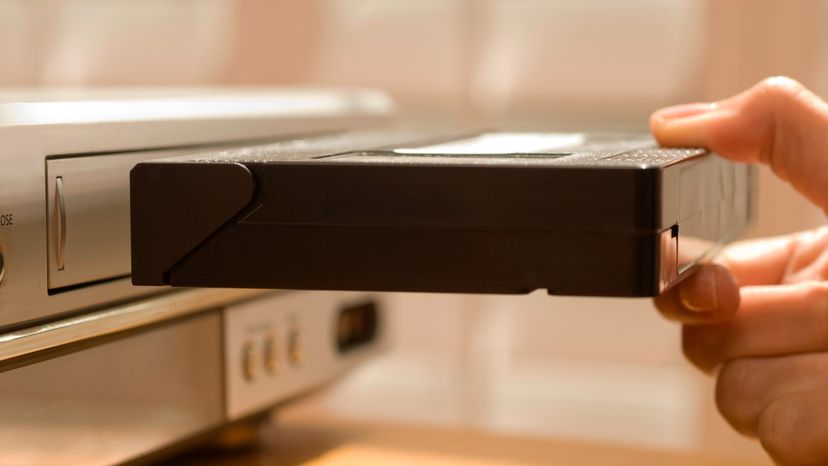
Most video tapes come with a copy protection signal embedded on the tape. One popular product in this arena is made by Macrovision. According to Macrovision, "The technology is applied to over 550 million videocassettes annually and is used by every MPAA movie studio on some or all of their videocassette releases. Over 220 commercial duplication facilities around the world are equipped to supply Macrovision videocassette copy protection to rights owners." Also, "The study found that over 30% of VCR households admit to having unauthorized copies, and that the total annual revenue loss due to copying is estimated at $370,000,000 annually." So, it's a pretty big problem.
The way the copy protection signal works is interesting. It's not that the second VCR "knows" that the video signal is coming from a video tape. It's that the signal coming from the original video tape contains a special type of noise that the TV set doesn't notice but a VCR cannot handle. This noise signal confuses a component, known as an automatic gain control (AGC) circuit, in the VCR, and the confused AGC records the signal incorrectly.
Advertisement
If you look at the HowStuffWorks article How Television Works, you will notice that a composite video signal contains luminance information (how bright a pixel should appear on the screen), color information (the color of each pixel), and synchronization information. The synchronization information tells the electron gun painting the image when to shoot back to the left side of the screen on each scan line, and when to shoot back to the top of the screen at the end of each frame. These are called horizontal synchronization pulses and vertical synchronization pulses. There is a period of time, known as the blanking interval, when the electron gun of the TV is turned off while the electron beam shoots back to the left or top of the screen.
The copy protection signal is inserted in the vertical blanking interval, and it contains extra sync pulses and fake video data. Since the TV is not displaying anything during the blanking interval, nothing shows up on the screen. That's why it looks okay on the TV. A VCR, on the other hand, is trying to make a faithful recording of the entire signal that it sees. It therefore tries to record the signal containing the extra sync pulses. The AGC sees the extra sync pulses and the fake video data and sets its level incorrectly as a result. The real video information in the frame gets recorded at a much lower level than it normally would, so the screen turns black instead of showing the movie. You'll still hear the sound, however, because a completely separate circuit records the audio.
These links will help you learn more:
Advertisement